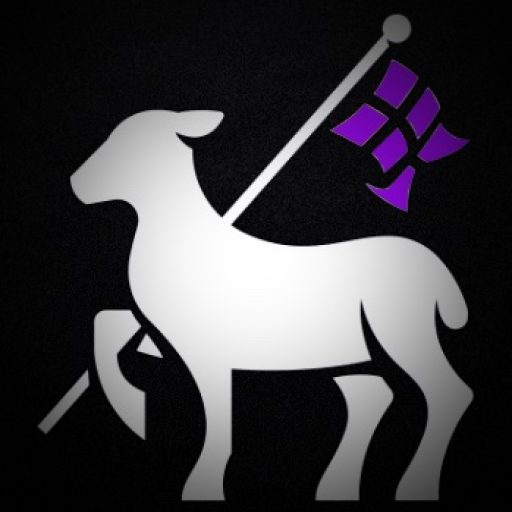Must Read, Sheep and Goat Health
Lambing and Kidding Barn Supplies
Medium-sized plastic toolbox
- It is useful for carrying supplies in and around the barn and can be secured if curious animals knock it over. It can be washed and disinfected as needed. This is a good option when you need to “grab and go” during lambing or kidding. We advise restocking after use to ensure it is always ready to go.
Clean cloth rags/towels
- Useful to clean up spills and messes. It can be used to help dry off a baby or to clean your hands if needed.
Latex gloves (short/normal size)
- Safe and effective barrier for use during medication administration, banding, spraying, and marking.
OB gloves (long/elbow length)
- Used during lamb or kid delivery and/or when intravaginal manipulation of lamb or goat kid is necessary.
Lubricant
- Used to assist in delivering lambs or goat kids, specifically when dealing with dystocia (stuck babies).
Tetracycline boluses (terramycin scour tablets) RX
- Contain 250mg of oxytetracycline and should be inserted into the vagina of sheep or goats if difficult birthing or intra-vaginal manipulation is required during the labor process. This is a treatment and preventative of infection.
Sharp, clean scissors
- Used for clipping the navel of the newborn lamb or goat.
Antiseptic spray or iodine
- Used to clean and disinfect the navel of the newborn lamb or goat.
Bander and elastrator bands
- Used for tail docking and castration of lambs and goat kids.
18-gauge luer lock (screw-on) needles, 3ml, 5ml, and 10ml syringes
- Used for IM and subcutaneous injections for mom and baby.
S-curved needle and 3/8 inch umbilical tape
- Used to suture and retain uterine prolapse in ewes and does
Granulated sugar
- Applied to the uterus during prolapse to help shrink the uterus before reinsertion is attempted.
Sterile water or saline solution and 20% glucose solution
- Used for severe hypoglycemia in newborn lambs and goat kids due to hypothermia or neglect. This complex procedure involves a 50/50 mixing of water and glucose solution followed by an intra-abdominal injection.
60ml syringe (slip tip) and tube
- Used for OG tube feeding hypothermic lambs and goat kids.
High-fat lamb/kid saver solution and oral drench
- Given to lambs or goat kids when they can swallow to add increased energy if needed.
Eye clips and applicator
- Used for the treatment of inverted eyelids.
Fresh frozen colostrum or colostrum mix powder
- Used for rejected lambs or goat kids who cannot receive mom’s colostrum. Must be given within the first 24 hours of life to be effective.
Milk replacement formula or homemade formula
- Used for feeding orphaned lambs or goat kids.
Bottle and Pritchard nipple
- Used for bottle-feeding lambs or goat kids.
Ear tags and ear tag applicator
- Used for applying ear tags to lambs and goat kids.
Marking paint brands or marking spray paint
- Used to mark mother and babies as applicable to identify easily. Consider specific colors for singles, twins, or triplets. Number mother and babies the same so you can easily determine who belongs to which mother.
BoSe RX
- Injectable selenium and vitamin E treat lambs and goat kids suffering from selenium deficiency or white muscle disease.
Oxytocin RX
- Injection is used under a veterinarian’s supervision in some cases to assist in contractions during the birthing process and to assist in placental expulsion after delivery.
Lamb and kid sweaters or jackets
- Used as an aid to keep lambs and kids warm during the early stages of life when maintaining core body temperature may be a problem.
Heat lamp
- Used to provide an artificial heat source for cold lambs or goat kids in lambing/kidding pen or in a creep environment. Be sure to buy a good, enclosed heat lamp and not cheap aluminum lamps. Heat lamps are often unnecessary and can easily start fires!
Aqueous penicillin RX
- It is given as a subcutaneous injection during initial processing to help aid and prevent navel illness in lambs and goat kids. 1ml is mixed with 1ml of CDT.
CDT vaccine
- It is given as a subcutaneous injection during initial processing to help aid and prevent navel illness in lambs and goat kids. 1ml is mixed with 1ml of aqueous penicillin.
Dexamethasone RX
- Used under the supervision of a veterinarian. It can be used to help induce labor in ewes or does.
Epinephrine RX
- Used under the supervision of a veterinarian. It can be used to help dilate the cervix of an ewe or doe during delivery.
Injectable antibiotic of choice RX
- Used under the supervision of a veterinarian to help prevent or treat bacterial infections such as mastitis, pneumonia, vaginitis, etc. Considerations are penicillin, LA200, Nuflor, and Draxxin. Contact your veterinarian for more directions.
Oral antibiotic solution, spectinomycin RX
- Red in color and often sold under the trade name Scour Halt or Spectam. This is used to treat bacterial infections of the GI system in sheep and goats.
Toltrazuril
- Non-FDA-approved coccidia prevention and coccidiosis treatment medication. This medication should be used under the direction of a veterinarian.
Harness
- Must have items for moving and securing ewes and does during and after the lambing or kidding process.
Lambing or kidding pen, temporary or permanent
- A 5ft-by-5ft secure pen with bedding will house the mother and offspring for 1-3 days post-delivery. It is used to identify issues easily and to allow adequate time for mother and baby to bond before being released to the general population. Mothers should be provided clean, fresh water and a source of good quality hay.
Electrolyte water additive
- Electrolyte powder is added to the water of ewes or does after delivery to help encourage hydration and prevent electrolyte imbalance following delivery. We prefer the Bluelite brand.
Worming solution of choice
- Used to worm ewes or does in the lambing or kidding pen during initial processing. Many producers will worm ewes and goats post-delivery to avoid the transfer of GI parasites from mother to baby. We prefer using Dectomax, which is given as an IM injection.
Notebook or tracking application for mobile device
- Used to keep track of notes about a delivery, number of offspring, sex of offspring, and medication administration. You will not remember what you do for each animal. Just write it down or log it in your application. We use notebooks and the application “HerdHelp” on our phones.
Veterinarian
- Contact and consult with a veterinarian BEFORE you start having babies. Lambs and Kids don’t care and love to be born in the middle of the night, during storms, or while you are sick. Attempting to find a veterinarian at the last minute is stressful and expensive. Be prepared!
Reference Books and Articles
- Good, understandable veterinarian guidebooks are essential for anyone raising sheep or goats to review and have on hand. Online forums, blogs, and other information sources can be unreliable and sometimes dangerous. Everyone should have a copy of “Pipestone’s Veterinary Guide to Sheep and Goats” by G.F. Kennedy, DVM. You can purchase this book on Premier 1.

